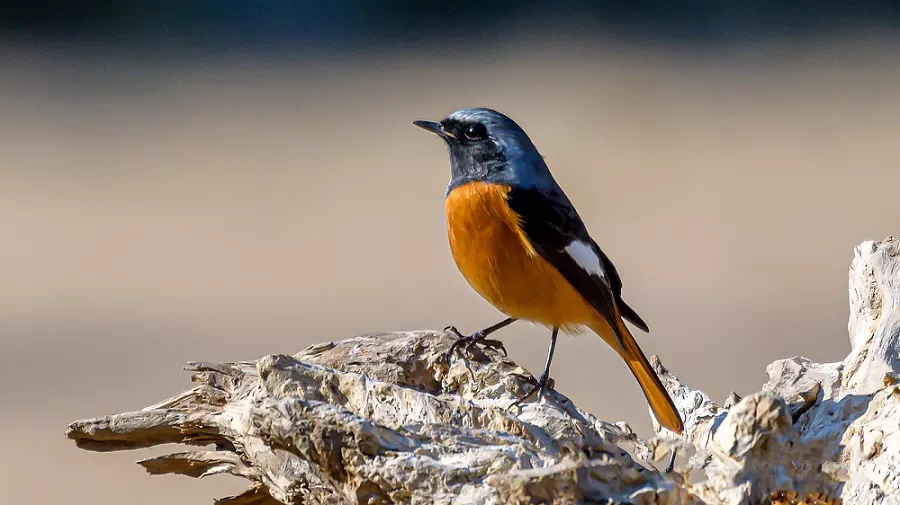The Daurian Redstart (Phoenicurus auroreus) is a visually striking and melodious songbird native to Eastern Asia. Known for its vibrant plumage and melodious song, this small passerine bird captivates birdwatchers and nature enthusiasts alike. In this article, we will explore the key characteristics, habitat, behavior, and conservation status of the Daurian Redstart, shedding light on its significance in the avian world.
Daurian Redstart Size:
The Daurian redstart is a small bird, measuring between 13-15 cm in length and weighing just 12-18 g.
Appearance and Plumage:
The Daurian Redstart exhibits distinct features that make it easily identifiable:
Male: The adult male Daurian Redstart boasts a striking plumage with a deep orange-red breast and belly, contrasting with a black head, wings, and tail. The lower back and rump are a slate-blue color. During the non-breeding season, the male’s plumage becomes duller.
Female: Females have a more modest appearance, featuring a gray-brown coloration with paler underparts and a hint of reddish-orange on the tail.
Distribution and Habitat:
The Daurian Redstart breeds in various regions of Eastern Asia, including parts of China, Japan, Korea, Mongolia, and Russia. It inhabits diverse habitats such as forests, woodland edges, shrublands, rocky areas, and mountainous regions. During migration and winter, it can be found in Southeast Asia, including countries like Thailand and Vietnam.
Behavior and Vocalizations:
Feeding Habits: The Daurian Redstart is an insectivorous bird, foraging for a variety of insects, spiders, and other small invertebrates. It employs a flycatching technique, sallying forth from perches to capture prey in mid-air.
Breeding Behavior: During the breeding season, males engage in courtship displays to attract females. They sing from prominent perches while fluffing their plumage and spreading their tail feathers in an eye-catching manner.
Vocalizations: The male Daurian Redstart has a melodious song consisting of a series of sweet, warbling notes. It also produces various calls, including soft whistles and sharp alarm calls.
Breeding and Conservation:
Nesting: Daurian Redstarts build cup-shaped nests in tree cavities, rock crevices, or man-made structures. The nest is constructed using plant materials, moss, and feathers, providing a safe and cozy environment for the eggs and nestlings.
Conservation Status: The Daurian Redstart is classified as a species of “Least Concern” on the IUCN Red List. However, habitat loss due to deforestation and urbanization poses a potential threat to their populations. Conservation efforts focus on preserving their natural habitats, raising awareness, and promoting responsible birdwatching practices.
Ecological Significance:
Insect Control: The Daurian Redstart contributes to the control of insect populations, playing a role in maintaining the ecological balance within its habitat.
Indicator Species: The presence or absence of Daurian Redstarts can serve as an indicator of the health and quality of the surrounding ecosystem, including the availability of suitable habitats and food sources.
Conclusion:
The Daurian Redstart, with its vibrant plumage and melodious song, is a delightful songbird found in Eastern Asia. Its presence adds color and music to forests, woodlands, and other habitats it calls home. As we appreciate the beauty and significance of this charismatic bird, it reminds us of the importance of protecting and conserving our natural environments, ensuring the survival of species like the Daurian Redstart for generations to come.


 Facebook
Facebook  Instagram
Instagram  Youtube
Youtube 